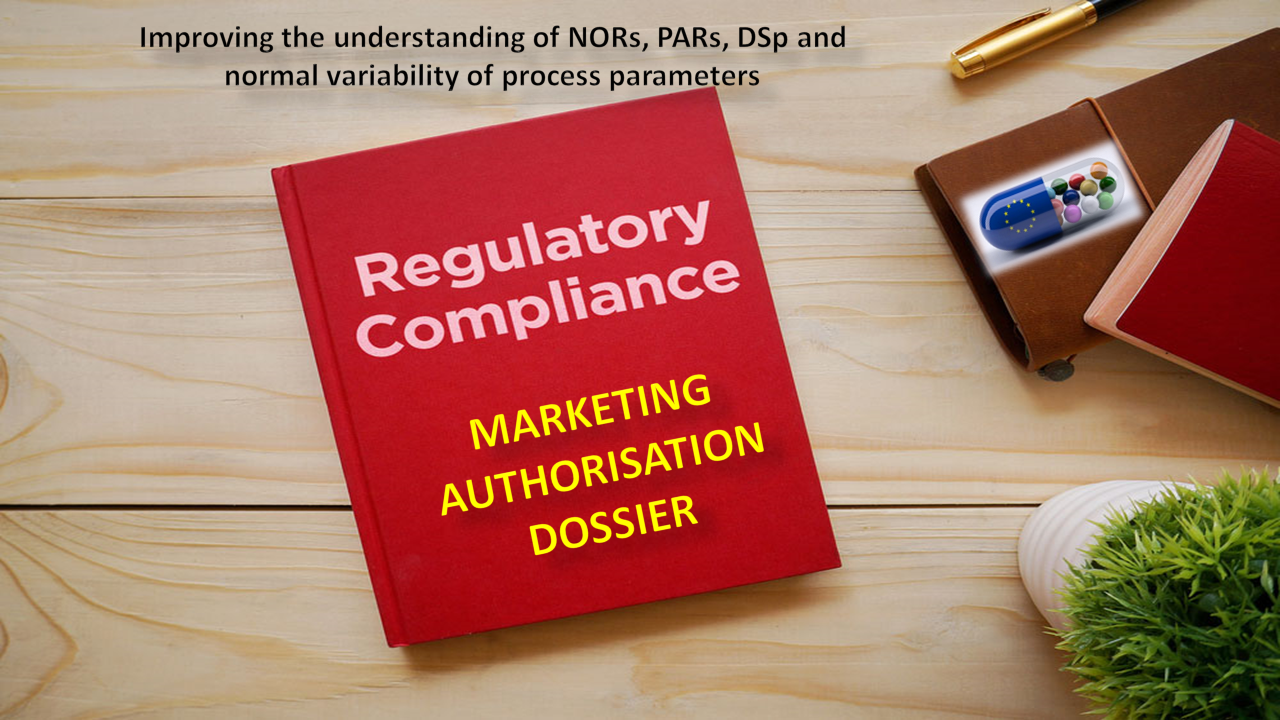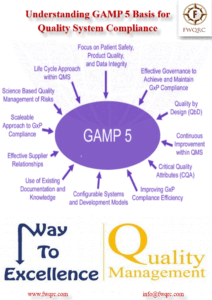Normal Operating Range (NOR) and how should NORs be presented in the marketing authorisation dossier:
The NOR describes a region around the target operating conditions that contain common operational variability (variability that can’t always be controlled). A NOR can be established for several process parameters of the same process step, with the understanding that the NOR does not represent deliberate adaptation of the process, and that the NOR does not cover a parameter range that affects the quality of the process output. Otherwise, a PAR or a multivariate Design space should be established. The use of NORs alone is not intended to introduce flexibility in the conditions for manufacturing but to better quantify the actual uncontrollable operational variability of process parameters. NORs should therefore be presented in marketing authorizations as what is practically achievable.
Proven Acceptable Range (PAR) and how should PARs be justified and presented in the marketing authorisation dossier
The PAR is defined as a characterized range of a process parameter for which operation within this range, while keeping other parameters constant, will result in producing a material meeting relevant quality criteria (ICH Q8 R2). A PAR allows deliberate change in one parameter without changing the others outside their NOR/ target. PARs could be presented in the description of the manufacturing process of the drug substance and/or the drug product (in S.2.2 or P.3.3 of the Module 3, respectively) as ranges.
PARs for single parameters are proposed by the applicant and are subject to regulatory assessment and approval. The PAR should be adequately justified regardless of whether the process parameter is considered a critical process parameter (ICH Q8 R2) or not. Where interaction effects between different parameters exist and the acceptable range for one process parameter depends on the setting of another parameter, the parameters should be included in a Design Space. Alternatively, a PAR can be defined for only one of the parameters in the process description, and other process parameters will be limited to target operating condition or NOR.
PARs can initially be established at a smaller scale than the commercial scale. If so, the applicant should ensure that the PAR is scale independent and applicable across alternative manufacturing sites, if relevant. Verification of PAR at commercial scale could be included in a post-approval verification protocol if appropriate. Working within the approved PAR is not considered as a change to the marketing authorisation dossier.
Changes to the target value within the registered PAR can be managed under the company’s Pharmaceutical Quality System without regulatory action. Consequently, there is no specific need to include a target set point within the registered PAR, but if included no variation will be required when changed. Any unexpected result should be reported forthwith to the competent authorities. Movement out of the PAR is considered to be a change and will initiate a regulatory post approval change process. Considerations for development (S.2.6/ P.2.3 of Module 3): Several PARs can be presented and investigated as part of the process understanding and development
Design Space (DSp) and how should design spaces be justified and presented in the marketing authorisation dossier:
The design space is defined by the multidimensional combination and interaction of input variables (e.g., material attributes) and process parameters that have been demonstrated to provide assurance of quality. Working within the approved design space is not considered as a change. Movement out of the design space is considered to be a change and would normally initiate a regulatory post approval change process. Design space is proposed by the applicant and is subject to regulatory assessment and approval (ICH Q8 R2).
A design space (DSp) can pertain to an isolated process step, or it can cover parameters of several process steps. A DSp can be supported by suitable in-process controls, or output material quality can be assured by working within the DSp ranges alone. A DSp can be restricted by ranges of process parameters only, input material attributes only, or a combination of process parameters and input material attributes.
Material attributes and process parameters that can affect quality but are not described by ranges in the DSp would need to be controlled by their specification or target/NOR, respectively. Critical processes should always be included as part of the formal DSp, even if they are controlled.
If you would like to receive notifications about regulatory guidance, email: info@fwqrc.com





